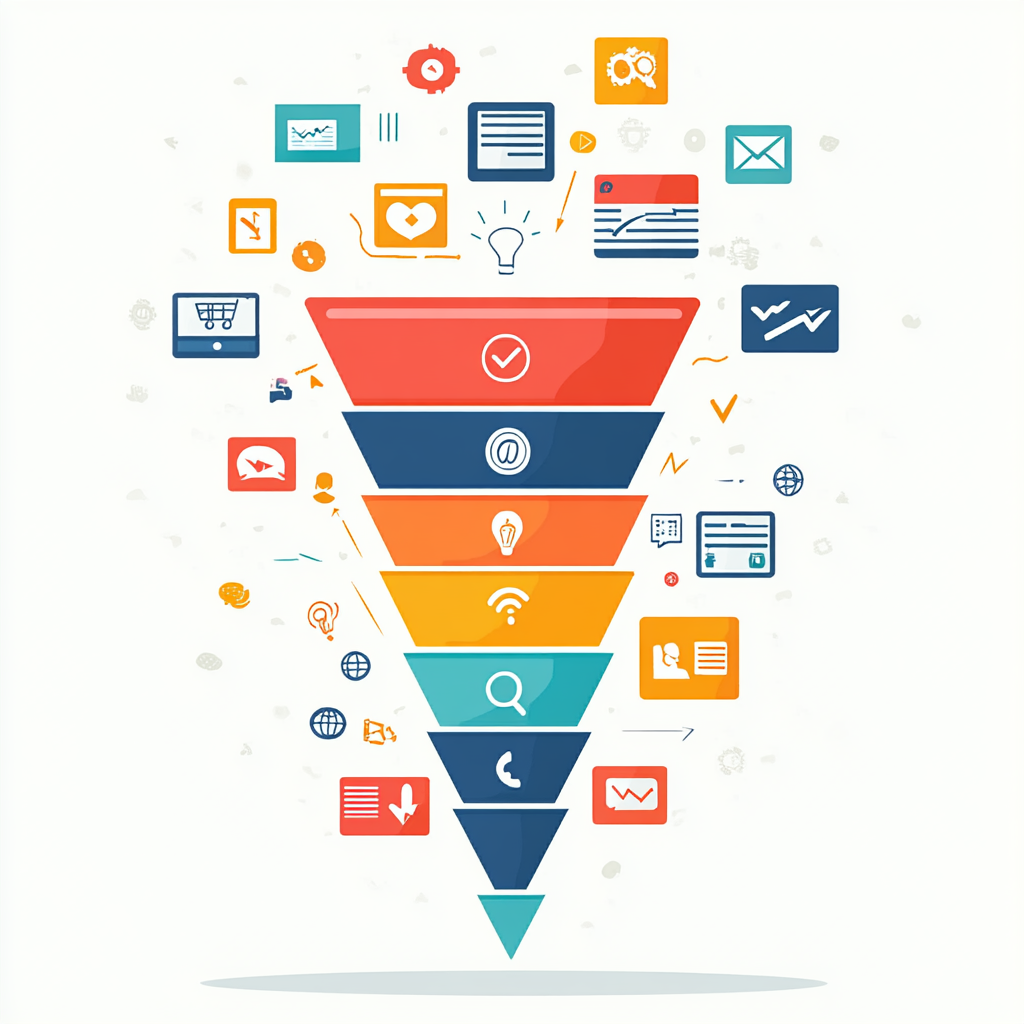Anyone managing a business, online or offline, knows that a store is not just a warehouse of products — it’s a stage.
The Large-Scale Retail Trade (GDO) has turned this concept into true behavioral engineering.
For decades, supermarkets have perfected the art of guiding our choices: the smell of freshly baked bread to trigger appetite, slow music to make us linger, milk and eggs placed halfway through the store, and bottled water in the farthest corner — leaving room for impulse buys along the way.
This isn’t logistics; it’s strategy — a deliberate way to make us walk through the entire store, exposing us to thousands of temptations.
That’s marketing built on observation, psychology, and environment.
We can affirm a key truth, especially for Small and Medium Enterprises:
you don’t need expensive artificial intelligence to think like a supermarket.
E-commerce, in its purest form, is simply the digital translation of these principles.
The good news is that most of these strategies don’t require enterprise budgets, but awareness, planning, and smart use of the tools you already have.
AI and dynamic personalization are amplifiers — a horizon to aim for — but the foundations are accessible to everyone.
This article is a journey into practical marketing: how to translate GDO “tricks” into actionable, sustainable strategies for your online store today.
The Mandatory Path
In physical supermarkets, the “customer journey” is literally a path. The layout is designed to maximize exposure.
Endcap displays — the ends of aisles — are the most coveted spots because they intercept every shopper.
As mentioned, essential goods (like water or cleaning products) are always placed at the back, forcing even the quickest customer to take a full tour.
How does this translate to an online SME? You don’t need AI — you need a Sales Funnel Design.
Your homepage is your store entrance, and your digital “endcaps” are your main banners: use them to highlight high-margin products or new arrivals, not everything at once.
Your category menu is your aisle map — it must be logical, clear, and guided.
If you sell clothing, categories like “Sales” or “New Arrivals” should be at the top — just like promotional displays near the aisle entrance.
The “bottled water in the back” is your checkout process — instead of making it frustrating, use it to sell even more.
The “Cart → Shipping → Payment” path is a sequence of micro-opportunities.
Rather than letting customers drop off, reassure them at every step (secure payment icons, clear summaries) and use the cart page to encourage simple impulse add-ons.
Of course, enterprise platforms with costly licenses and AI-powered personalization can create millions of real-time custom journeys.
But the basic principle — *guiding* the user rather than letting them wander — is a matter of solid UX/UI and strategic thinking.
It’s fully achievable on popular platforms like Shopify, WooCommerce, or Magento.

Eye-Level Placement
Let’s go back to the physical aisle. Our attention naturally focuses at eye level.
That’s the most expensive shelf space — where brands pay to be.
Cheaper items are placed lower (requiring effort to bend down), while kids’ products are at their height.
This is visual merchandising.
In e-commerce, “eye level” is the above-the-fold area — everything visible before scrolling.
The first products shown on a category page are the most important.
Most e-commerce sites default to “Newest” or “Alphabetical” sorting. That’s a mistake.
Alternative options like Featured or Popular are better.
Almost every platform allows manual pinning or curation of top products.
This is your digital merchandising.
It doesn’t require AI — just 30 minutes of analysis:
Which are your bestsellers? Which have the highest margin?
Put them “at eye level,” i.e., at the top of the page.
It’s a zero-cost action that directly impacts sales — your virtual shop assistant recommending the best pick.
Lower-priced alternatives hidden at the bottom (which require scrolling) will only be found by determined shoppers.
The evolution of this concept — dynamic sorting via real-time algorithms — is powerful but expensive.
Before investing thousands in technology, make sure you’ve mastered the basics: curate your “eye-level” products manually.
The results will surprise you.
Impulse Buying: from “3-for-2” to Free Shipping
The customer’s most vulnerable moment is at the checkout.
Tired and with lowered defenses, they’re surrounded by chocolates, chewing gum, prepaid cards, and batteries: the classic low-cost impulse purchase.
In GDO, promotions like “3-for-2” are also used — psychologically more powerful than a “33% discount” because words like “free” or “gift” instantly trigger a sense of gain.
For an online SME, replicating this is not only possible — it’s essential.
And the tools are already integrated into most platforms.
Cross-selling (“Frequently bought together”) and Upselling (“You might also like the premium version”) are standard features.
These correlations can (and should) be set manually.
If you’re selling a handbag, manually associate the matching wallet — that’s your “checkout counter display.”
You don’t need AI analyzing millions of carts; you need your own product knowledge.
Ask yourself: “If someone buys X, what else might they need?”
The most powerful psychological weapon for e-commerce — and one that costs nothing technologically — is the free shipping threshold.
The supermarket cart is large for a reason: it makes us feel “guilty” if it’s half empty.
Online, the free shipping threshold (“Spend €10 more for free shipping”) creates the same effect.
The customer perceives shipping as a “wasteful” cost, a loss.
They’d rather spend €12 on an unnecessary item than “lose” €8 on delivery.
It’s irrational — but it always works.
Setting this rule in your backend is a simple, strategic, and sustainable decision.
Price Anchoring: The Perception of Value
One of the most powerful yet invisible psychological mechanisms is the price anchoring effect.
In supermarkets, premium products are placed next to cheaper alternatives to make the latter seem more affordable.
Online, the principle is the same: displaying high-end products first creates a mental reference point.
When users see the mid-range option, they automatically perceive it as a “good deal.”
That’s why it’s often better to sort by relevance or quality rather than by lowest price —
context completely changes how value is perceived.
Digital Private Labels: Branding and Recognition
In physical retail, private labels — store brands — allow retailers to offer competitive products with higher margins.
Online, this translates into brand consistency.
Consistent naming, design, and storytelling build familiarity and trust, even across different product lines.
An e-commerce store with a recognizable, coherent visual identity achieves the same psychological effect:
users associate quality and reliability with everything the brand offers, becoming less sensitive to price.
Rotating Promotions and Digital Seasonality
Brick-and-mortar stores rotate promotions across different categories to encourage customers to return regularly and not miss “the next deal.”
In digital marketing, this becomes trigger-based marketing and seasonal campaigns:
limited-time discounts, personalized newsletters, and dynamic banners keep users engaged and returning.
The goal isn’t just to sell more, but to create habit:
when customers come back often, the chance of spontaneous conversion increases — even without active promotions.
Loyalty Programs and CRM: The Digital GDO
Traditional loyalty cards have always been a key sales driver in large-scale retail.
Online, they evolve into digital CRM and loyalty programs:
point systems, personalized offers, discounts on favorite products, and smart reminders.
A well-designed loyalty system turns one-time purchases into recurring relationships,
increasing Customer Lifetime Value and reducing dependence on promotions.
In other words, the relationship replaces the push: customers don’t buy for the discount,
but because they feel part of an ecosystem.
Social Proof
How can an online store replicate the smell of bread or the ability to touch a fabric?
E-commerce can’t use physical senses — but it can activate powerful psychological substitutes.
For SMEs, the investment shouldn’t be in complex tech, but in high-quality content.
Scent and touch are replaced by high-quality photos and videos, paired with persuasive, evocative copy.
Don’t write “Blue sweater.”
Write “Wrap yourself in the softness of our blue cashmere-blend sweater.”
Evoke a sensation.
It costs something (photographer, copywriter, agency), but it’s a structural investment that pays off over time.
The most powerful substitute for the “free tasting” is social proof.
Customer reviews are your most valuable marketing asset.
GDO stores let you taste a piece of cheese to activate the “reciprocity” principle;
online reviews trigger “conformity”: if 100 others liked it, it must be good.
Implementing a review collection system (even via automated post-purchase emails) is low-cost and generates immense trust — far more than any banner ad.
Artificial Intelligence represents the next step: advanced platforms perform “sentiment analysis” to examine thousands of reviews and identify trends.
But before you analyze data, you need to *collect* it.
Start asking for reviews today — it’s the first, most sustainable step in that direction.

The Importance of Your Own Data
The journey from GDO to e-commerce teaches us that technology is an amplifier, not the strategy itself.
GDO built its success by observing human behavior.
For a digital SME, the starting point is the same: observe your own data.
You don’t need complex predictive models to begin.
Just open Google Analytics 4: where do customers drop off in your funnel?
Which are the 3 most visited pages?
Open your e-commerce backend: which are your 5 best-selling products?
And which ones are frequently purchased together?
The answers to these questions are your “digital merchandising” — the base for action.
You can implement manual cross-selling, curate your homepage, and improve product pages.
These are your foundations.
Once these manual, sustainable strategies are in place and generating returns,
then — and only then — should you consider investing in advanced automation or AI-driven dynamic pages.
But don’t let technological complexity paralyze you:
the psychological “tricks” of supermarkets are right there, waiting to be applied,
and most of them only cost time and strategic focus.
And find a competent partner — like HT&T — who can work alongside you to achieve success.
We are recognized as one of the best agencies for SMEs “from zero to hero” because we work with our clients toward clear, measurable goals.
We’re not managers — we’re growth partners.
We’ve guided our clients from small stores to publicly listed companies.
Work with people who share your hunger for success and bring complementary knowledge —
to keep growing, improving, and aiming higher every time.



